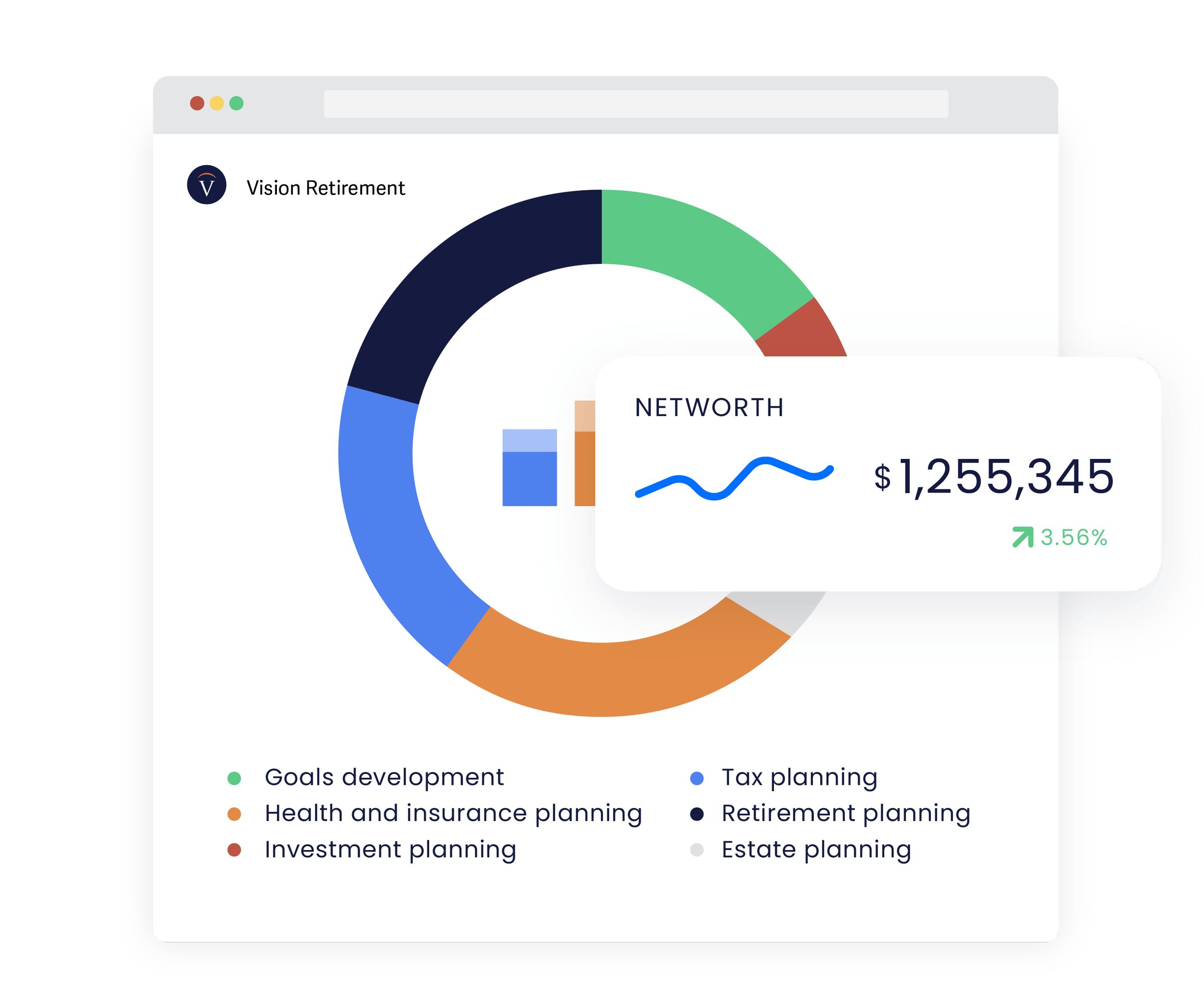
Investing
Access our collection of articles, tools, and videos to help make informed investment decisions.
Investing for Beginners
Learning how to invest need not be complicated. With help of our tools, even beginners can make smart investment choices.
Featured Content
How to Start Investing: A Guide for Beginners
Learning how to start Investing doesn’t have to be complicated. With help of our guide, even beginners can make smart investment choices.
Article
How to Invest in Stocks: A Guide for Beginners
Our stock-investment guide will teach you the basics to help you make informed decisions in this arena moving forward.
Article
How to Invest in Bonds: A Comprehensive Guide
Bonds are often a smart way to help diversify your portfolio as they are generally a more stable investment than stocks. Learn all about them here.
Article
Investing for Monthly Income
If you're nearing retirement (or are already retired!) and considering monthly income investment options, check out this article.
Article
The Basics of Investing
Want to know how to get started, where to begin, and what to invest in? This video delves into investing basics and covers various topics such as saving vs. investing, common types of investments, risk tolerance, and more.
Investing Bootcamp Video Series
Unlock your financial potential with our Investing Bootcamp! Dive into our engaging video series designed to boost your confidence and investment knowledge. Whether you're just starting out or looking to sharpen your skills, we cover everything you need to know ranging from asset allocation and rebalancing to dollar-cost averaging, REITs, and mutual funds.
Investing Strategies
Learn all about investing methods that boost returns, lower risk, and align with your unique goals. Find the strategy that's right for you.
Want tailored advice on how and where to invest your money? Check out our VR Circle Membership.
Types of Investments
Learn about the most common types of investments and how they work.
What you Need to Know About Real Estate Investment Trusts (REITs)
Learn how real estate investment trusts (REITs) can help diversify your portfolio, generate steady income, and expand your investment opportunities.
Investing Terms to Know
Feel better prepared the next time you’re stuck talking to the “next Warren Buffett” at a party.
Tools and Strategies
-
Asset allocation refers to the strategy of dividing your investments among various asset classes such as stocks, real estate, and cash. The proportions you use to do so ultimately depend on your risk tolerance, financial goals, and investment time horizon (the period between your initial investment and when you plan to access the funds). Consequently, asset allocation is unique to each individual investor.
-
Diversification—a strategy used to help minimize investment portfolio risk—is often achieved by allocating your investments among different types of assets and sectors within both domestic and foreign economies.
-
Dollar-cost averaging is a long-term investment strategy whereby you spread out equity purchases (e.g., stocks or funds) over regular intervals and in roughly equal amounts—instead of making one lump-sum purchase. Rather than purchasing $24,000 of a stock all at once, for example, you’d buy $1,000 worth of shares of that same stock every month over a 24-month period. The objective? To minimize the risk associated with market volatility by smoothing out your purchase price over time. In this way, you can avoid investing all your money at the pinnacle of the market.
-
Rebalancing is simply the act of adjusting (buying and selling) your investments to restore portfolio weights to your desired asset allocation.
For example, let’s say your initial portfolio value was $50,000 with your financial advisor allocating $30,000 (60%) to stocks and $20,000 (40%) to bonds. Then, assume these stocks performed well over the year and boosted the overall value of your portfolio to $55,000—shifting your allocation to 70% stocks (worth $38,500) and 30% bonds (worth $16,500).
In this scenario, your financial advisor would simply sell stocks and buy additional bonds to return your portfolio to its original 60/40 allocation and thus optimize portfolio performance.
-
Risk tolerance is defined as your ability and willingness to stomach large swings in the value of your investments.
Financial advisors typically give clients a risk-tolerance questionnaire that asks questions about various market scenarios. For example, they might inquire about your response should the stock market drop by 15% over a six-month period.
Your responses to these questions, in turn, help your financial advisor determine the best way to allocate your investments per your comfort level with risk.
While a higher risk tolerance generally suggests your portfolio will contain riskier investments (e.g., stocks), a lower risk tolerance may see a portfolio focused on more stable investments such as bonds or certificates of deposit (CDs).
-
Short selling is a speculative investment strategy whereby investors borrow shares of a stock or asset they believe will decrease in value and then commit to replacing the same at a later date: selling these borrowed shares to a buyer at the current market price to ultimately repurchase them later, ideally at a lower price than what they sold for initially.
-
Tax-loss harvesting is a strategy used to reduce taxes owed on capital gains by selling investments that have lost value, allowing you to offset capital gains tax incurred from selling profitable assets. When your capital losses exceed your capital gains, you can deduct up to $3,000 from your taxable income. If your losses are greater than $3,000, therefore, you can carry over the remaining amount to future tax returns until you’ve fully utilized the deduction.
Investments and Key Terms
-
A bond is essentially a loan you provide to a company or the government, with the borrowing entity agreeing to pay you back at a future time (i.e., the “maturity” date) along with interest at a fixed “coupon” rate. Various types of bonds are each assigned a credit rating based on credit quality; generally, the higher the credit quality, the less risky the loan.
-
Capital gains are the profits you earn when selling an asset such as an investment (e.g., stocks or bonds), a home, or a business. The IRS imposes a tax on these gains in specific situations, known as the "capital gains tax."
Capital gains are categorized into two types: short-term and long-term. While the former are realized from assets held for less than a year and taxed as ordinary income, the latter apply to assets held for more than a year and are typically taxed at a 15% rate—assuming your income falls below certain thresholds.
-
A share of common stock represents ownership in a company.
When you own at least one share, you become a shareholder of that company giving you voting rights on corporate policies and the ability to help elect the board of directors.
-
A dividend is a payment made by a company to its shareholders, serving as a bonus or reward for owning stock.
Dividends are typically paid on a per-share basis. For example, if a company distributes $0.50 per share and you own 100 shares, you’d receive a total of $50. Dividends are generally paid regularly, often on a quarterly basis, but not all stocks pay them. Companies can also reduce or eliminate their dividends at any time.
-
The DJIA is one of the most recognized and closely monitored stock market indices in the world, serving as a barometer for the overall health of the U.S. stock market and (by extension) the domestic economy. More specifically, the DJIA tracks the performance of 30 large, publicly traded companies based in the United States.
-
If you're keen in the performance of a market index—such as the S&P 500—but want to avoid the costs and time associated with buying each individual stock or managing investments, an ETF can help you replicate index performance at a much lower cost.
An exchange-traded fund is defined as a financial instrument that consists of a basket of securities comprised of stocks, bonds, currencies, and commodities. ETFs often track major indices such as the Dow Jones or Nasdaq Composite.
ETFs are similar to mutual funds in many ways as both allow you to invest in a diversified portfolio by purchasing just one security, though they do differ in their management and trading structures
-
An index fund is a type of mutual fund that enables investors to invest in a specific index such as the S&P 500, Dow Jones Industrial Average (DJIA), or other specialized indexes that focus on particular industries or segments. Index funds are designed to replicate the returns of the chosen index and typically don’t employ fund managers as (in turn) a generally cost-effective investment option.
-
A mutual fund is a type of investment vehicle that pools money from various investors to purchase securities. Investors buy shares or units in the fund, which are then managed and invested by a professional portfolio manager.
Mutual funds typically consist of a mix of stocks, bonds, and short-term assets (e.g., money market instruments) and sometimes focus on one category—with assets referred to as “holdings” and varying based on fund objectives. A high-risk small-cap fund may invest exclusively in smaller company stocks, for example, while a large-cap mutual fund will include larger company stocks in its holdings.
Mutual funds are popular among investors since they offer an easy way to diversify investments and spread risk across a range of assets.
-
The Nasdaq( National Association of Securities Dealers Automated Quotations) is one of the largest stock exchanges globally with 3,000+ publicly traded companies. While it’s primarily known for its association with the technology sector, it also includes companies from various other industries such as healthcare, consumer goods, and financial services.
-
The P/E ratio is a tool used to assess a company's worth, specifically indicating how much you’re paying for $1 of company earnings. If a company reports a profit of $5 per share and each share sells for $20, for example, the P/E ratio is 4—meaning the company is trading at four times its earnings.
This ratio, then, is often compared to the P/E ratios of other companies within the same industry or historical ratios for the same one. While there is no definitive guideline for what constitutes a "good" P/E ratio, the average historical median P/E for the S&P 500 is nearly 15.
-
Preferred stock like common stock, represents ownership in a company.
One of the main differences between the two is that preferred shareholders generally don’t have voting rights. They do, however, enjoy several advantages over common stockholders such as a higher dividend rate than typically seen for common stock issued by the same company. Preferred dividends must also be paid out before any dividends are distributed to common shareholders, who have a lower ranking than their peers in the event of liquidation.
-
Real estate investment trusts are companies that own, operate, or finance income-generating real estate across various sectors including apartments, hotels, shopping malls, office buildings, and warehouses.
A REIT typically collects money from sources such as rent paid by tenants or interest from investments and then distributes this as dividends to shareholders. Many REITs are publicly traded on major securities exchanges, allowing investors to buy and sell them like stocks while earning income generated from real estate without the need to own or manage properties.
-
The S&P 500, or Standard & Poor's 500, is a stock market index that tracks the performance of 500 of the largest publicly traded companies in the United States.
-
A stock split occurs when a company increases the number of its outstanding shares by issuing additional shares to current shareholders: lowering the price per share.
If a shareholder owns 10 shares of stock valued at $100 ($10 per share), and the company decides to execute a 2-for-1 stock split, for example, the shareholder will then own 20 shares of stock still worth $100 (now valued at $5 per share) post-split.
Want to gauge how much you learned? Take our quiz.
Clicking on the button above will open a new browser window.
Investing Calculators
Run some basic numbers with our free retirement and investing calculators.
Retirement Savings Calculator
Our retirement savings calculator will help you estimate your expected retirement savings.
Investment Return Calculator
With our investment return calculator, you can estimate the growth potential of your money.
Return on Investment (ROI) Calculator
Our return on investment calculator outputs your ROI percentage.

Just want advice on how and where to invest? Check out our advice membership.
See if our expertise matches with your needs.
The Latest Investing Articles
Check out the most recent posts to our investing blog.
Want tailored advice on how and where to invest your money? Check out our Advice Membership.
The Latest Investing Videos
Check out the most recent posts to our investing vlog.
Popular Questions People Also Ask
Find answers to common questions we receive about investing.
-
Investing is important because it enables individuals to accumulate wealth over time and helps them achieve their financial goals.
By investing in assets such as stocks, bonds, and/or real estate, individuals can leverage compound interest and market growth: potentially increasing their returns to a much larger degree than they could with traditional savings accounts.
Overall, investing is a vital component of long-term financial planning that can pave the way for a more secure and prosperous future.
-
Saving typically involves setting aside a portion of income for short-term needs or an emergency fund, often by placing money in a savings account where it earns minimal interest. Its primary goal? To preserve capital and maintain liquidity given little to no risk.
Investing, on the other hand, is often employed as a long-term strategy for purposes such as saving for college or building a retirement nest egg. While investing carries more risk than saving, it also offers the potential for higher returns over time.
-
Active investing calls for a hands-on strategy where investors or fund managers actively buy and sell assets, aiming to outperform benchmarks via market analysis, stock selection, and timing.
Passive investing, on the other hand, seeks to replicate the performance of a specific market index (e.g., the S&P 500) by maintaining a diversified portfolio of securities—typically via index funds or exchange-traded funds (ETFs).
-
An RIA (registered investment advisor) is either a firm or individual who provides investment advice and is licensed by the SEC or a similar state regulatory authority. More importantly, RIAs are fiduciaries and thus legally required to put a client’s interests above their own at all times throughout the relationship.
In contrast, other individuals or firms claiming to be “financial advisors” typically operate as salespeople within the broker-dealer category. Brokers adhere to a less rigorous “best interest” (BI) standard of care—falling short of the full fiduciary standards required of RIAs—whereby they only act in your best interest at the time a recommendation is made rather than throughout the entire relationship.
-
A financial advisor with a CFP® designation is the most widely recognized credential. Regulated by the Certified Financial Planner Board of Standards, CFPs must pass a difficult exam and meet strict standards with respect to education and work experience. Better yet, CFPs are held, by law, to a fiduciary standard: meaning they’ll always put your best interests above their own (not all financial advisors are held to this standard).
While all CFPs are financial advisors, not all financial advisors are CFPs—potentially influencing the depth of the financial advice and strategies offered.
-
Investing can take many forms. Some of the most common? Stocks, bonds, mutual funds, and real estate. Each investment type has its own risk-return profile, and many investors choose to diversify across these categories to balance risk and reward.
Stocks, for example, generally offer higher potential returns but come with increased volatility while bonds tend to provide more stable returns with lower risk. Mutual funds, meanwhile, allow investors to access a diversified portfolio managed by professionals: making it easier to invest in the absence of extensive knowledge about individual securities. Then there’s real estate, which can provide not only regular rental income but also the potential for property value appreciation.
Understanding these different investment vehicles is imperative for building a well-rounded portfolio aligning with one's financial goals and risk tolerance.
We’re an independent Registered Investment Advisor (RIA).
Here’s what makes our retirement planning firm a little different from our competitors:
A fiduciary standard of care
As fiduciaries, we are compensated by our clients—not products that pay high commissions. That means you’ll receive advice that’s always in your best interest and never about our bottom line.
The Vision experience
With dedicated technology and the support of our in-house team of professionals, our financial advisors have the resources they need to deliver a superior experience to every client.
An integrated approach
We quarterback your other fiscal partners—such as attorneys, accountants, and insurance agents—to help coordinate all aspects of your financial life.
Collaboration with a dedicated CFP® professional
No matter your engagement level with us, your financial advisor will possess robust expertise and top credentials in the industry: upholding the highest standards with respect to ethics, objectivity, and professionalism.
A variety of engagement options
A breadth of choices means it’s easy to work with our firm, regardless of whether you’re just starting out or have accrued significant assets.
Compare Our Investment Solutions
Fiduciary Investment Management (FIM)
Enjoy our most customized solution wherein we construct, implement, continually monitor, and actively manage your account.
✓ Best for: Clients seeking active investment management and a fiduciary to look out for their best interests
✓ Cost: Maxes out at 1.25% of total account value
✓ Minimum investment requirement: $100,000
✓ Investment vehicles: Exchange-traded funds (ETFs), mutual funds and individual securities
✓ Reviews: Quarterly
✓ Available to: All clients
Automated Investing w/Oversight
(VR Robo)
Combine the power of automated investing—via Betterment—with the guidance of a dedicated CFP® professional.
✓ Best for: Clients who are novice investors and/or seeking a lower-cost investment option with minimal human intervention
✓ Cost: .75% of total account value
✓ Minimum investment requirement: $1,000
✓ Investment vehicles: Exchange-traded funds (ETFs) only
✓ Reviews: Annual
✓ Available to: All clients
Self-Directed w/Oversight
Buy and sell your preferred investments with oversight from a CFP® professional.
✓ Best for: Clients who want to be hands-on but have a financial advisor as a sounding board
✓ Cost: $9 (most trades)
✓ Minimum investment requirement: $5,000
✓ Investment vehicles: Exchange-traded funds (ETFs), mutual funds and individual securities
✓ Reviews: None
✓ Available to: Clients with a Fiduciary Investment Management account

Start simplifying
your journey and speak to a financial advisor today.
See if our expertise matches with your needs.














































